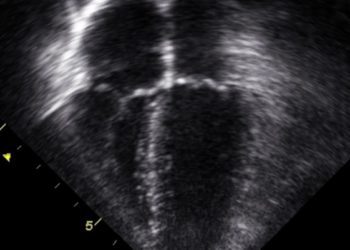New clinical prediction model helps emergency physicians identify high-priority febrile children
Image: PD
1. Low oxygen saturation, body temperature, and tachypnea are all strong clinical predictors of pneumonia in febrile children.
2. Including C reactive protein in prediction models significantly improves these models’ ability to predict serious bacterial infection and pneumonia among febrile children.
Study Rundown: Fever constitutes the chief complaint in 10-20% of pediatric emergency visits, yet no easy-to-use clinical prediction model has been validated and widely implemented to risk stratify febrile children upon arrival to the ED. This study developed and cross-validated a prediction model that incorporates both clinical signs and symptoms and laboratory markers (C reactive protein) of serious bacterial infection (SBI). The model also proved useful in differentiating pneumonia from other types of SBI, though it did not allow for further stratification of other SBIs into UTIs, sepsis/meningitis, or bacteremia. This model offers a promising tool for the clinical discrimination of children who present with undifferentiated fever; by categorizing children as high and low risk for SBIs, the model may identify children in need of further, more invasive diagnostic work-ups. Further research on the role of C reactive protein in such prediction tools is necessary, since in this observational study CRP was collected at the discretion of the doctor and therefore obtained more consistently in sicker children.
Click to read the study in BMJ
In-Depth [prospective, observational diagnostic study]: This study tested a clinical prediction model to assess risk of serious bacterial infection among febrile children, aged 1 month to 15 years, presenting to the emergency department. The authors derived the model and then cross-validated it using two large prospective cohorts in the Netherlands, assessing validation in an external population from the UK. The model included predefined predictor variables age, duration of fever, tachycardia, temperature, tachypnea, ill appearance, chest wall retractions, prolonged capillary refill time, low oxygen saturation, and C reactive protein. Pneumonia, other serious bacterial infections (SBIs), and no SBI were the main outcome measures assessed via logistic regression analysis. Statistics for pairs of patients (patient with pneumonia and one with no SBI, for example) were calculated to estimate the ability to discriminate between patients with different diagnoses.
Significant predictors of pneumonia were low oxygen saturation (odds ratio 4.92, 95% confidence interval 2.53-9.54), body temperature (1.33 per degree Celsius, 1.05-1.69), and C reactive protein (1.89 via log transformation, 1.58-2.27). Models that included C reactive protein were significantly better at predicting pneumonia and other SBIs than models with clinical signs and symptoms as the only predictor variables. Low risk thresholds (less than 2.5%) were able to rule out, and high risk thresholds (10% of more) were able to rule in, the presence of pneumonia and other SBIs reliably.
By Elizabeth Kersten and Andrew Bishara
More from this author: Meta-analysis updates recommendations for C-sections, Shorter telomere length linked with increased risk of common cold, Breastfeeding associated with lower rates of hypertension, Health information technology improves obesity treatment access and screening, Undervaccination becoming more common, associated with increased admission rates
© 2013 2minutemedicine.com. All rights reserved. No works may be reproduced without written consent from 2minutemedicine.com. Disclaimer: We present factual information directly from peer reviewed medical journals. No post should be construed as medical advice and is not intended as such by the authors or by 2minutemedicine.com. PLEASE SEE A HEALTHCARE PROVIDER IN YOUR AREA IF YOU SEEK MEDICAL ADVICE OF ANY SORT. Content is produced in accordance with fair use copyrights solely and strictly for the purpose of teaching, news and criticism. No benefit, monetary or otherwise, is realized by any participants or the owner of this domain.






